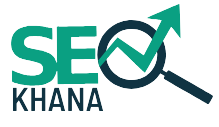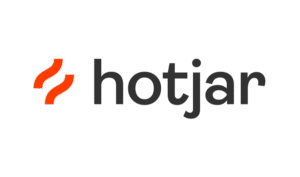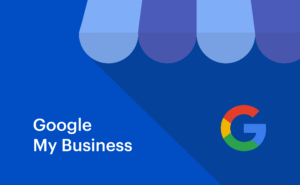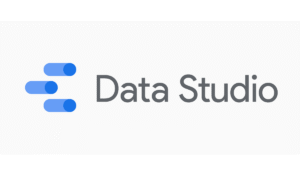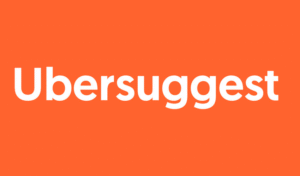What if your website could appear at the perfect moment right when someone is ready to buy, compare, or decide? That’s the power of understanding keywords intent. In a digital landscape filled with noise, targeting the right intent behind every search can be the difference between a quick exit and a lasting customer.
Gone are the days when SEO was only about inserting high-volume keywords. Today, real success lies in understanding why people search and delivering the answers they need. Whether you run an eCommerce store, offer services, or build content platforms, decoding keyword search intent is your golden ticket to more visibility, more engagement, and more conversions.
This comprehensive guide, crafted by SEO Khana, a top-tier agency offering full-scale SEO solutions including on-page SEO optimization, dives deep into keywords intent, especially buyer and commercial intent keywords. You’ll learn how to craft content that aligns with user behavior, leverage Answer Engine Optimization (AEO) for greater reach, and implement a strategy that turns traffic into action.
Let’s unlock the intent behind every keyword and turn searchers into satisfied customers.
What is Keyword Intent and Why Does It Matters?
Keyword intent, also known as search intent, is the underlying goal a user has when typing a query into a search engine. Broadly speaking, search intents fall into four categories:
- Informational Intent: The user wants to learn something (e.g., “what is keyword intent?”).
- Navigational Intent: The user wants to visit a specific site (e.g., “SEO Khana website”).
- Commercial Intent: The user is considering a purchase but is still researching (e.g., “best SEO tools for startups”).
- Transactional Intent (Buyer Intent): The user is ready to make a purchase (e.g., “buy SEO tool subscription”).
Understanding keyword search intent helps businesses:
- Create relevant content.
- Reduce bounce rates.
- Increase conversions.
- Appear in Answer Engine Optimization features like featured snippets, People Also Ask, and voice search.
A website optimized with the right intent keywords becomes more than just a destination—it becomes the right answer. To achieve this level of precision and impact, many brands turn to experienced content creation companies that understand how to align messaging with user intent, enhance search visibility, and drive meaningful engagement.
Types of Keywords Based on Intent
Understanding the types of keywords based on user intent is key to building a successful SEO strategy. Each type reflects a different stage of the buyer journey and helps you tailor your content to meet specific user needs. Here are the four main types:
Informational Keywords
These are used by users who are looking to learn something. They’re not necessarily looking to buy they want knowledge, explanations, or tutorials.
Examples:
- “What is SEO?”
- “How to use keyword tools”
- “SEO vs SEM”
Best Used In:
- Blog posts
- How-to guides
- FAQs
Goal: Build trust, authority, and attract top-of-funnel traffic.
Navigational Keywords
These keywords are used when a user already knows the brand or website they want to visit. They’re searching with the intention of reaching a specific page or domain.
Examples:
- “SEO Khana blog”
- “Ahrefs login”
- “Google Keyword Planner”
Best Used In:
- Branded content
- Optimized landing pages
Goal: Ensure visibility for your brand’s name and assets in search results.
Commercial Intent Keywords
These keywords show that the user is interested in purchasing but is still doing research or comparing options.
Examples:
- “Best keyword research tools 2025”
- “Top SEO agencies for startups”
- “Affordable SEO service providers”
Best Used In:
- Comparison articles
- Product/service reviews
- Landing pages with strong CTAs
Goal: Nurture leads by providing decision-support content.
Transactional (Buyer) Intent Keywords
These keywords indicate that the user is ready to make a purchase or take a significant action (e.g., sign up, download, order).
Examples:
- “Buy SEO software now”
- “Subscribe to keyword research tool”
- “Hire SEO consultant”
Best Used In:
- Product pages
- Service landing pages
- Checkout or sign-up pages
Goal: Maximize conversions by targeting ready-to-buy visitors.
Mapping your content to these different keyword intents ensures that you guide users through their entire journey from awareness to decision while improving SEO performance across the board.
read more about:
How to Identify the Right Intent Keywords for Your Business
Identifying the right intent keywords starts with a deep understanding of your audience, their journey, and how your business solves their problems. Here’s a step-by-step approach to uncovering and leveraging the most effective intent keywords for your strategy:
Step 1: Understand Your Customer Journey
Before diving into keyword tools, you need to define the stages your customers go through—from awareness to decision. Break this down into:
- Top of the Funnel (TOFU) – Users searching for information.
- Middle of the Funnel (MOFU) – Users comparing options.
- Bottom of the Funnel (BOFU) – Users ready to buy.
Map each stage to keyword intent types: informational, commercial, and transactional.
Step 2: Analyze Existing Search Queries
Use Google Search Console and analytics tools to:
- Find queries users already use to find your site.
- Group them by intent (are users just learning, or are they ready to act?).
- Identify which content is converting and why.
This will help you discover which types of keyword intent are driving performance and where you have content gaps.
Step 3: Use Commercial Intent Keyword Tools
Leverage tools like:
- SEMrush: Use Keyword Magic Tool and filters to find commercial and transactional terms.
- Ahrefs: Analyze SERPs and keyword modifiers like “buy,” “top,” “best,” “review.”
- Google Keyword Planner: Use forecast and competition metrics to identify intent.
Search for keywords using modifiers such as:
- Buy
- Order
- Best
- Affordable
- Review
- Near me
- Deals
These modifiers signal clear commercial or buyer intent.
Step 4: Study the SERP Landscape
Search your chosen keywords in Google and analyze:
- What kind of pages rank (blogs, product pages, comparison tools)?
- Are there ads or shopping results? (Indicates high commercial intent)
- Do featured snippets appear? (Great for informational content and AEO)
This step helps you align your content format with user expectations and outperform competitors.
Step 5: Segment and Prioritize
Group your keywords into buckets:
- Informational (top-funnel content)
- Commercial (mid-funnel content)
- Transactional (bottom-funnel content)
Prioritize based on:
- Business objectives
- Competition level
- CPC (a high CPC usually means high commercial intent)
- Existing content and rankings
This segmentation ensures you’re creating targeted content that supports each stage of the funnel.
Step 6: Continuously Refine Based on Performance
Regularly review your analytics to:
- Track conversions by keyword type.
- Identify which intent segments are underperforming.
- Optimize content to better align with evolving search behaviors.
Keyword intent is dynamic—what works today may shift with trends, algorithms, or customer behavior. Continuous optimization is key.
By following this structured process, you’ll not only identify high-impact keywords for your business, but also align them with customer needs, search engine expectations, and your conversion goals.
How to Leverage Keyword Intent in Your SEO Strategy
Understanding keyword intent is powerful but real results come from applying it strategically across your SEO efforts. Here’s how to effectively integrate keyword intent into your SEO workflow to improve rankings, user experience, and conversions.
a. Align Content Strategy with Search Intent
Once you’ve segmented your keywords by intent, align each group with a dedicated content type:
- Informational Keywords → Educational content like blog posts, guides, and tutorials.
- Commercial Keywords → Comparison pages, listicles (e.g., “Top 10…”), case studies.
- Transactional (Buyer) Keywords → Product pages, pricing pages, sign-up CTAs, checkout flows.
Each piece of content should be laser-focused on answering the user’s question or fulfilling their need based on intent. For example, someone searching “best SEO tools” expects a comparison not a general article about SEO.
b. Optimize On-Page Elements by Intent
Tailor every on-page SEO element to reflect the intent behind the keyword:
- Title Tags and Meta Descriptions: Make them action-driven for transactional keywords (e.g., “Buy the Best SEO Tool for 2025”) or informative for informational ones (e.g., “What is Keyword Intent? A Complete Guide”).
- Headers and Subheadings (H1-H3): Clearly indicate the page’s purpose. Use high-intent keywords naturally in headings to match AEO and snippet optimization.
- Internal Linking: Create an internal link structure that guides users through the intent funnel—from informational content to conversion-focused pages.
- Call to Action (CTA): Match the CTA to the keyword’s intent. For example, an informational article might end with “Learn More” or “Explore Our Services,” while a transactional page might say “Buy Now” or “Start Your Free Trial.”
c. Create a Funnel-Based Content Map
Use your keyword buckets (informational, commercial, transactional) to build a full-funnel content map:
- Top of Funnel (TOFU): Attract broad traffic using educational, SEO-rich blog content.
- Middle of Funnel (MOFU): Use comparison guides and industry-specific recommendations to nurture interest.
- Bottom of Funnel (BOFU): Direct users to high-converting landing pages tailored with transactional keywords.
This strategy helps you meet users wherever they are in the buyer journey and nudge them toward conversion.
d. Leverage AEO (Answer Engine Optimization)
To enhance visibility in SERP features like featured snippets, People Also Ask, and voice search, structure your content for clarity and relevance:
- Use short, direct answers for FAQ-style questions.
- Include lists, tables, and bullet points for scannability.
- Implement schema markup to signal relevance to search engines.
AEO relies heavily on intent-based content—Google rewards pages that best match what the user really wants to know or do.
e. Target Featured Snippets with Intent-Matched Content
If your keyword indicates a question or decision-based query, structure your content to earn a featured snippet:
- Include the keyword intent phrase in the subheading (e.g., H2: “Why You Should Hire an SEO Consultant”).
- Follow with a concise paragraph (40–60 words) answering the question.
- Format content in numbered or bulleted lists when possible.
This increases your visibility, especially for mobile and voice search.
f. Monitor and Adjust Your Strategy Over Time
User behavior and algorithm updates can shift the effectiveness of your intent-driven content. Continuously:
- Review keyword performance through Google Search Console and analytics.
- Monitor rankings by keyword type (informational vs. transactional).
- Track conversion rates and bounce rates on each page type.
- Refresh outdated content to reflect current user intent and trends.
Keyword intent isn’t static. Evolving your content strategy based on performance insights will ensure long-term SEO success.
How to measure the effectiveness of intent-based keywords
Measuring the success of your intent-driven SEO strategy is crucial to understanding whether your content truly meets user needs and drives business goals. By tracking the right metrics, you can identify which keywords perform well and which need adjustment. Here’s how to effectively measure the impact of your intent-based keywords:
a. Track Keyword Rankings by Intent Type
Monitor how your targeted keywords rank in search engine results pages (SERPs). Segment your keywords into categories—informational, commercial, buyer intent and track their positions separately. This helps you:
- See if informational keywords are driving awareness by ranking on page one.
- Check if buyer intent keywords appear prominently on product or conversion pages.
- Evaluate if commercial intent keywords rank well on comparison or review pages.
Use tools like Google Search Console, Ahrefs, or SEMrush to track rankings and identify opportunities for improvement.
b. Analyze Click-Through Rate (CTR)
CTR shows how many users clicked your page after seeing it in search results. A high CTR on pages optimized for specific intent keywords means your titles and meta descriptions effectively address user intent.
- For informational keywords, high CTR suggests your content answers questions well.
- For buyer intent keywords, a strong CTR indicates your offers and CTAs appeal to buyers.
Improve CTR by crafting intent-aligned meta titles and descriptions and using schema markup to enhance rich results.
c. Monitor Bounce Rate and Dwell Time
Bounce rate measures how many visitors leave after viewing just one page, while dwell time tracks how long users stay. For intent-aligned content:
- Low bounce rates and longer dwell times suggest users find the content relevant and helpful.
- High bounce rates or short dwell times may indicate a mismatch between keyword intent and content.
Use Google Analytics or similar platforms to monitor these metrics and adjust content accordingly.
d. Measure Conversion Rates Based on Keyword Intent
Conversions vary by intent. Define clear conversion goals per page type, such as:
- Newsletter sign-ups or downloads on informational content.
- Product inquiries or demo requests on commercial pages.
- Purchases or sign-ups on transactional pages.
Track conversion rates using Google Analytics Goals or eCommerce tracking. High conversions on pages optimized with buyer intent keywords prove your strategy’s effectiveness.
e. Evaluate User Engagement Metrics
Engagement signals such as:
- Pages per session
- Scroll depth
- Repeat visits
indicate that users are interacting meaningfully with your site, often reflecting strong alignment with their search intent.
f. Use A/B Testing to Optimize Intent Targeting
Test different versions of page elements (titles, CTAs, content layouts) to see which best satisfies user intent. For example:
- Try a stronger CTA for transactional keywords.
- Experiment with FAQs for commercial intent pages.
Continuous A/B testing helps refine your approach to intent optimization.
g. Regularly Audit and Refine Keyword Intent Strategy
User intent evolves over time, as do search trends and algorithms. Periodically:
- Re-assess keyword intent using updated SERP analysis.
- Refresh or repurpose content that underperforms.
- Expand your keyword list with emerging high-intent opportunities.
This ongoing process ensures your SEO strategy remains aligned with what users want and how they search.
Common Mistakes to Avoid When Targeting Keywords Intent
- Mismatch Between Content and Intent: Avoid using buyer intent keywords on purely informational pages.
- Keyword Stuffing: Focus on relevance and natural placement.
- Ignoring On-Page SEO Optimization: Meta data, heading tags, image alt text, and internal links must align with keyword intent.
- Failing to Address AEO Requirements: Forgetting to structure content with schema markup and concise answers can cost you visibility.
Conclusion
The future of SEO lies in delivering what users want at the exact moment they search. Understanding keywords intent whether it’s buyer, high, or commercial intent keywords—gives your website a massive edge over the competition.
By aligning content with user expectations and optimizing through on-page SEO and Answer Engine Optimization (AEO), you don’t just rank—you convert.
Whether you’re launching a new site or auditing an existing one, let SEO Khana help you implement a results-driven strategy rooted in intent-based optimization.
FAQ Section
Q1: What are buyer intent keywords and why are they important?
A: These are keywords typed by users ready to make a purchase. Targeting them increases conversion rates.
Q2: How can I find high commercial intent keywords for my website?
A: Use tools like Ahrefs or SEMrush and analyze SERPs for signals like ads, product pages, and pricing mentions.
Q3: What’s the difference between keyword search intent and keyword commercial intent?
A: Search intent covers all user motivations, while commercial intent focuses on purchase-driven behavior.
Q4: How does on-page SEO relate to keyword intent?
A: It ensures your content is structured and optimized to match the user’s expectations, improving rankings and engagement.
Q5: Why should eCommerce sites focus on buyer intent keywords?
A: These keywords directly influence purchasing decisions, making them vital for sales and ROI.
